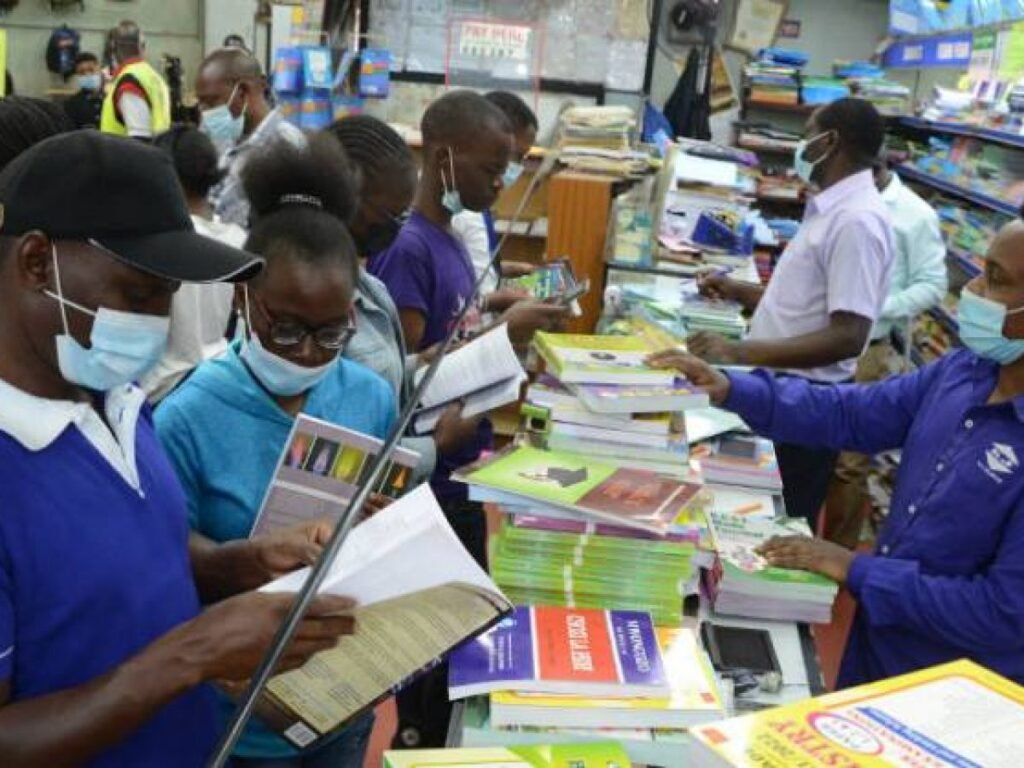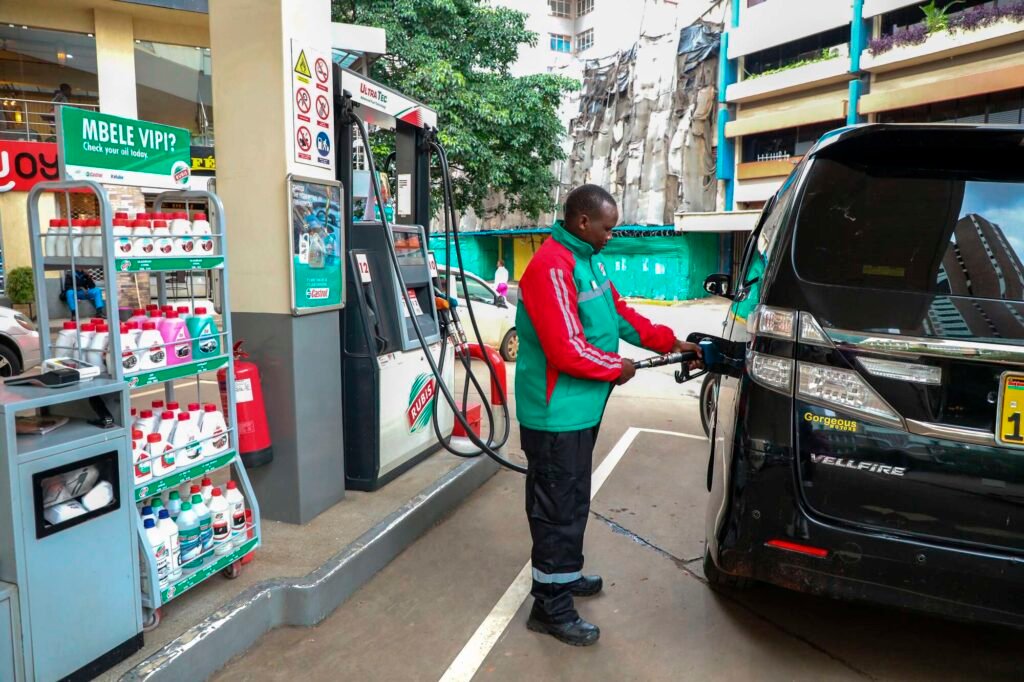General News
Nairobi Traffic Jams May Ease On October 15, Says KeNHA Boss

The headache that has become Mombasa Road and some key roads leading out of the city, owing to the ongoing construction of the Nairobi Expressway will persist up to mid-October.
According to Kenya National Highway Authority (KeNHA) acting Director General Eng. David Muchilwa, the opening of the last section of the closed road will be done around October 15.
The communication comes few days after the chaos witnessed last Thursday along Mombasa Road when many motorists and passengers spent more than eight hours waiting after an accident between Mlolongo and Cabanas stretch.
The construction of the Sh62 billion and 27km Nairobi Expressway road will begin at Mlolongo and will end at James Gichuru Road, where motorists will be charged for use.
It is being constructed by Chinese contractor China Road and Bridge Company(CRBC) is expected to be complete by next year February.
According to the public notice, KENHA said it expects to open road sections between Jomo Kenyatta International Airport(JKIA) to Mlolongo on September 10, Westlands to James Gichuru on September 30 and Haile Selassie to the University of Nairobi on October 15.
”This weekend, major works have been ongoing to manage traffic flow concentrated along the JKIA-Mlolongo section, which has been identified as a section where motorists experienced a lot of traffic congestion,” said Eng. Muchilwa.
The authority also said so far, elevated section (viaduct) stands is 71.6 per cent complete. KeNHA has also promised to keep Mombasa Road users updated on the flow of traffic.
‘‘In light of the recent traffic flow disruptions and delays along the Mombasa Road stretch, currently under construction, KeNHA is determined to reduce the time spent to the bare minimum. In this regard, the Authority endeavours to keep the road users up-to-date with the flow of traffic along the road,’’ Eng. David Muchilwa added.
Muchilwa said: ”Of course we shall use social media as we always do but we are also looking for radio stations that Nairobians listen to frequently to update them.”
According to Nairobi Area Traffic Commander Joshua Omukata, last week’s chaos was brought by an accident but breakdown services were not able to access the scene on time to clear it due to the traffic jam.
Muchilwa also said a multi-agency team has been established to guide on the traffic control interventions
‘‘This will include ensuring that construction sites have adequate and well-signposted lanes, rapid intervention in case of accidents and well-defined U-turn points,’’ he explained.
The official urged motorists to be cautious as they drive along this road and keep within speed limits indicated along with other traffic signs.
‘‘We appeal to all road users to exercise road courtesy as that will help manage the traffic even better. The authority is determined to fast-track the ongoing works as we assure all road users that we will continually provide adequate diversion for smooth traffic flow,’’ he said.
General News
IMF Criticizes Kenya’s Fuel Subsidy Re-Introduction, Warns of Budget Distortion

The International Monetary Fund (IMF) has criticized Kenya for re-implementing the fuel subsidy scheme, expressing concerns that the lack of funds to pay oil marketers could distort the budget.
Despite a previous commitment by President William Ruto in 2022 not to subsidize pump prices, the government reintroduced the subsidy, preventing petrol and diesel prices from reaching higher levels in October 2023.
The IMF argues that the subsidy was applied without available funds, as the Treasury has yet to pay oil marketers at least Ksh9 billion ($55.6 million) accumulated from the previous year. President Ruto’s decision to reinstate subsidies goes against conditions set by the IMF for accessing loans.
Petrol and diesel prices, which were Ksh217.36 ($1.34) and Ksh205.47 ($1.27) respectively in Nairobi in October 2023, remained lower than the potential Ksh220.43 ($1.36) and Ksh217.11 ($1.34) due to the subsidy. However, the IMF disapproves of the decision, emphasizing that the removal of the subsidy was a key condition for a 38-month budget support scheme.
The IMF criticizes the prolonged process of forming a taskforce and delays in implementing decisions regarding fuel pricing.
The removal of the subsidy in May of the previous year led to record-high pump prices, crossing the Ksh200-mark later in the year due to a combination of subsidy removal and a VAT increase to 16 percent.
Kenya’s administration, faced with rising fuel costs, chose to reinstate the subsidy, prompting the IMF to raise alarms over the lack of budgeted funds and potential distortions in the country’s financial plans.
The ongoing disagreement highlights the challenges and consequences associated with balancing domestic economic policies and meeting international financial commitments
General News
Parents in Meru County Turn to Second-Hand Books Amid Economic Hardships

As the back-to-school rush season unfolds in Meru County, a growing number of parents are making a strategic choice to purchase second-hand books for their children.
This decision stems from the challenging economic conditions that have prompted families to seek ways to cut costs.
Among these parents is Ms. Prisca Gakii, who revealed that opting for second-hand books allows her to save money, which can then be allocated towards essential expenses like school fees.
She highlighted a practical advantage for Form-One students, emphasizing that using older books can protect them from potential theft, as new books often become targets for less scrupulous classmates.

Ms. Gakii pointed out a notable price difference, citing an example of a new Oxford dictionary priced at almost Sh1,900, compared to a used one available for Sh1400.
She justified her preference for the older but more affordable option, emphasizing that they contain the same content.
Janet Wamuyu, a second-hand books trader, shed light on the lucrative nature of their business during the opening of the first term, which coincides with the peak season.
As learners transition to new grades or classes, there is a heightened demand for various books, including dictionaries, Kamusi, and Golden Bells.

Wamuyu explained that this period, especially when Form-One students are joining school, facilitates easy acquisition of books for new stock.
The trading process involves exchanging books for the next grade or class at a lower rate, providing an economical alternative for parents instead of purchasing an entirely new set of books.
She further noted that their source of new stock comes from parents whose children have completed their studies and no longer require the books.
Despite the success during the peak season, Wamuyu acknowledged the challenges faced during other times of the year when only a few revision books are in demand, highlighting the cyclical nature of the business in Meru County.











